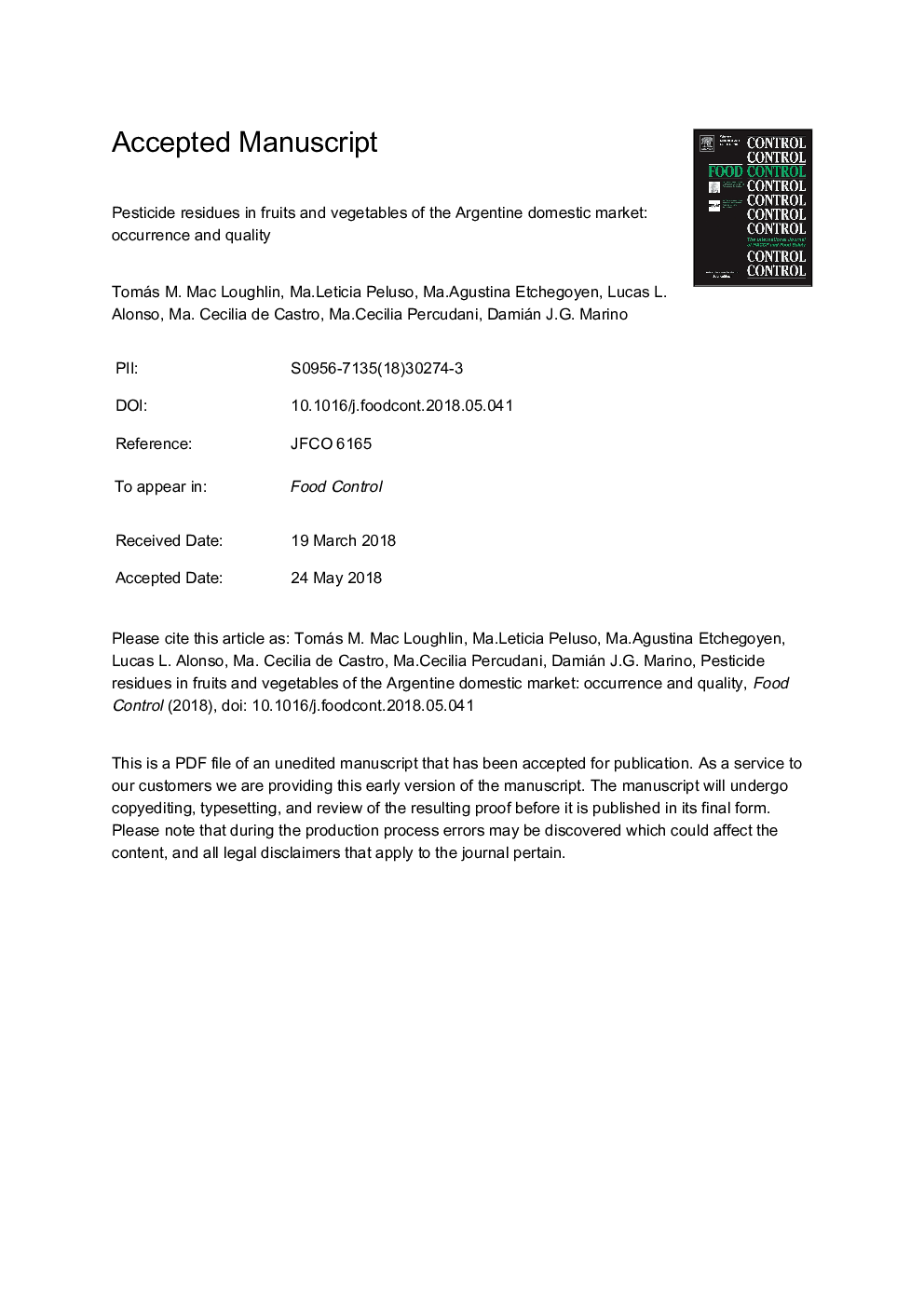| Article ID | Journal | Published Year | Pages | File Type |
|---|---|---|---|---|
| 8887723 | Food Control | 2018 | 32 Pages |
Abstract
The presence of pesticides in fruits and vegetables has been a growing concern in Argentina. Only three of the major marketplaces there have the necessary infrastructure to determine pesticide residues in produce. The aim of this study was to investigate the presence of such residues in nationally produced fruits and vegetables for domestic consumption in order to evaluate the present state of the market. A total of 135 of the most widely consumed fruits and vegetables were analyzed for 35 pesticides. The analyses utilized a QuEChERS⢠multiresidue-extraction kit along with tandem gas chromatography-mass spectrometry. The results were evaluated according to maximum residue limits (MRLs) for each commodity and pesticide according to national regulation. Pesticides were detected in 65% of the total samples, in 44% of the positive samples at or below the MRLs, and in 56% above the MRLs. Oranges had the highest pesticide concentration detected, but carrots had the highest frequency of noncompliance among the produce items sampled. Five pesticides were detected at frequencies above 10%, the highest being chlorpyrifos in 25.9% of the total samples. In other countries, the percentage of samples above the MLR is 4 times lower than our findings, and 7 times lower for exported products. An implementation of programs designed to facilitate awareness, capacitation, and monitoring is urgently recommended.
Related Topics
Life Sciences
Agricultural and Biological Sciences
Food Science
Authors
Tomás M. Mac Loughlin, Ma. Leticia Peluso, Ma. Agustina Etchegoyen, Lucas L. Alonso, Ma. Cecilia de Castro, Ma. Cecilia Percudani, Damián J.G. Marino,
